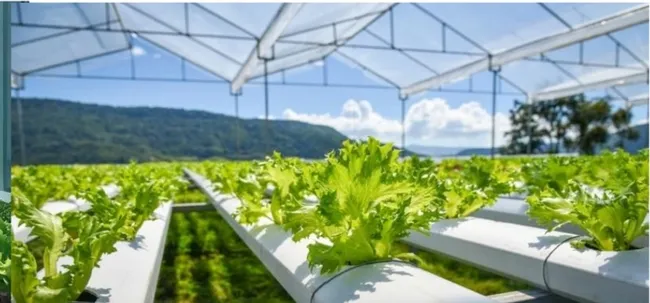
Urban food production and hydroponic systems are gaining traction in Southern California driven by Increasing interest in local food sources, sustainability, and the efficient use of space and resources. Maintaining high water quality standards is crucial to the success of these systems, as water quality directly impacts plant health, food safety, and overall productivity. This blog explores Southern California's water quality requirements for urban food production and hydroponics, highlighting relevant standards, guidelines, and best practices.
Importance of Water Quality in Urban Food Production
Water is a critical resource in urban food production, whether through soil-based methods or hydroponic systems. The quality of water used for irrigation and nutrient delivery significantly influences plant growth, crop yield, and food safety. Contaminated water can introduce pathogens, heavy metals, and harmful chemicals, posing risks to human health and the environment (Boulter et al., 2017).
Key Considerations:
- Microbial Contaminants: Water used in urban food production must be free of harmful microorganisms, such as E. coli and Salmonella, to prevent foodborne illnesses (Ferguson et al., 2016).
- Chemical Contaminants: Pesticides, heavy metals, and nitrates can adversely affect plant health and food safety (Pérez-Murcia et al., 2016).
- pH and Electrical Conductivity: Water's pH level and electrical conductivity (EC) influence nutrient availability and plant growth (Resh, 2013).
Water Quality Standards and Guidelines
In Southern California, several regulatory bodies establish water quality standards for agricultural and hydroponic use. The following standards are essential for ensuring safe and effective water use in urban food production:
a. California Department of Public Health (CDPH) Guidelines
The CDPH provides guidelines for irrigation water quality standards , emphasizing the importance of safe drinking water for food production.
Key parameters include Microbial Quality and chemical contaminants. Table 1 shows the parameters that must be monitored and their established levels to protect human health.
Irrigation water should not exceed 126 CFU (colony-forming units) of E. coli per 100 mL for surface water and 10 CFU per 100 mL for groundwater (CDPH, 2015).
Chemical Contaminants: The maximum allowable levels of chemical contaminants, such as nitrates (10 mg/L) and lead (0.015 mg/L), are established to protect human health.
Table 1: Key parameters to monitor for public Health

* CFU stands for colony-forming units
b. U.S. Environmental Protection Agency (EPA)
The EPA sets national standards for drinking water and agricultural water use, which are critical for urban food production.
Relevant guidelines include:
National Primary Drinking Water Regulations: These include standards for microbial and chemical contaminants, such as the Maximum Contaminant Levels (MCLs) for nitrates (10 mg/L) and microbial indicators (EPA, 2020).
c. California Department of Food and Agriculture (CDFA)
The CDFA offers resources and recommendations for urban agriculture, including water quality assessment and management practices. They emphasize the need for:
Regular Testing: Regular water quality testing for microbial and chemical contaminants to ensure compliance with safety standards.
Water Source Management: Recommendations for managing water sources, including rainwater harvesting and treatment of reclaimed water for agricultural use.
Hydroponic Water Quality Requirements
Hydroponic systems rely entirely on water for nutrient delivery, making water quality even more critical. Key parameters for hydroponic water quality include
- pH Levels: Optimal range is 5.5 to 6.5 for most crops
- Electrical Conductivity (EC): Generally between 1.5 to 2.5 mS/cm
- Microbial Content: Minimal to prevent pathogen growth
- Nutrient Concentration : Varies with crop type. Macronutrients include nitrogen (N), phosphorus (P), potassium (K), and micronutrient blend.
Best Practices for Ensuring Water Quality
Implementing best practices for water quality in urban food production and hydroponics can help mitigate risks and enhance productivity:
1. Regular Testing and Monitoring: Conduct routine water quality testing for microbial and chemical contaminants to ensure compliance with established guidelines. Most established production nurseries would have automated sampling systems making real time adjustments; however hand testing equipment is often used for verifying pH and electrical conductivity.
2. Water Filtration and Treatment: Employ water filtration systems, such as UV sterilization or reverse osmosis, to reduce microbial and chemical contaminants in irrigation and hydroponic water (Boulter et al., 2017).
3. Source Water Management: Utilize rainwater harvesting and reclaimed water, ensuring proper treatment and adherence to safety standards (Pérez-Murcia et al., 2016).
4. Education and Training: Attend education and training on water quality management and best practices to be aware and comply with standards (Hoffman et al., 2020).
Last thoughts!
Water quality is crucial for urban food production and hydroponics in Southern California. Adhering to established standards and guidelines ensures the safety and efficacy of water used for irrigation and nutrient delivery. By implementing best practices and conducting regular water quality assessments, urban growers can enhance productivity, ensure food safety, and contribute to sustainable urban agriculture. Ongoing research and public education are essential for addressing water quality challenges and promoting successful regional urban food systems.
References
1. Boulter, J. I., Anderson, K. L., & Smith, M. (2017). Water quality considerations for urban
agriculture. Journal of Environmental Quality, 46(5), 1001-1010.
2. California Department of Public Health (CDPH). (2015). Guidelines for the Safe Use of Reclaimed
Water in Agriculture.
3. Environmental Protection Agency (EPA). (2020). National Primary Drinking Water Regulations.
Retrieved from EPA website (https://www.epa.gov/safewater).
4. Hoffman, M. L., Williams, A., & Jones, R. (2020). Enhancing urban resilience through improved
water management practices. Environmental Science & Policy, 113, 10-18.
5. Pérez-Murcia, M. D., et al. (2016). The effect of water quality on urban agriculture productivity.
Waste Management, 58, 105-113.

